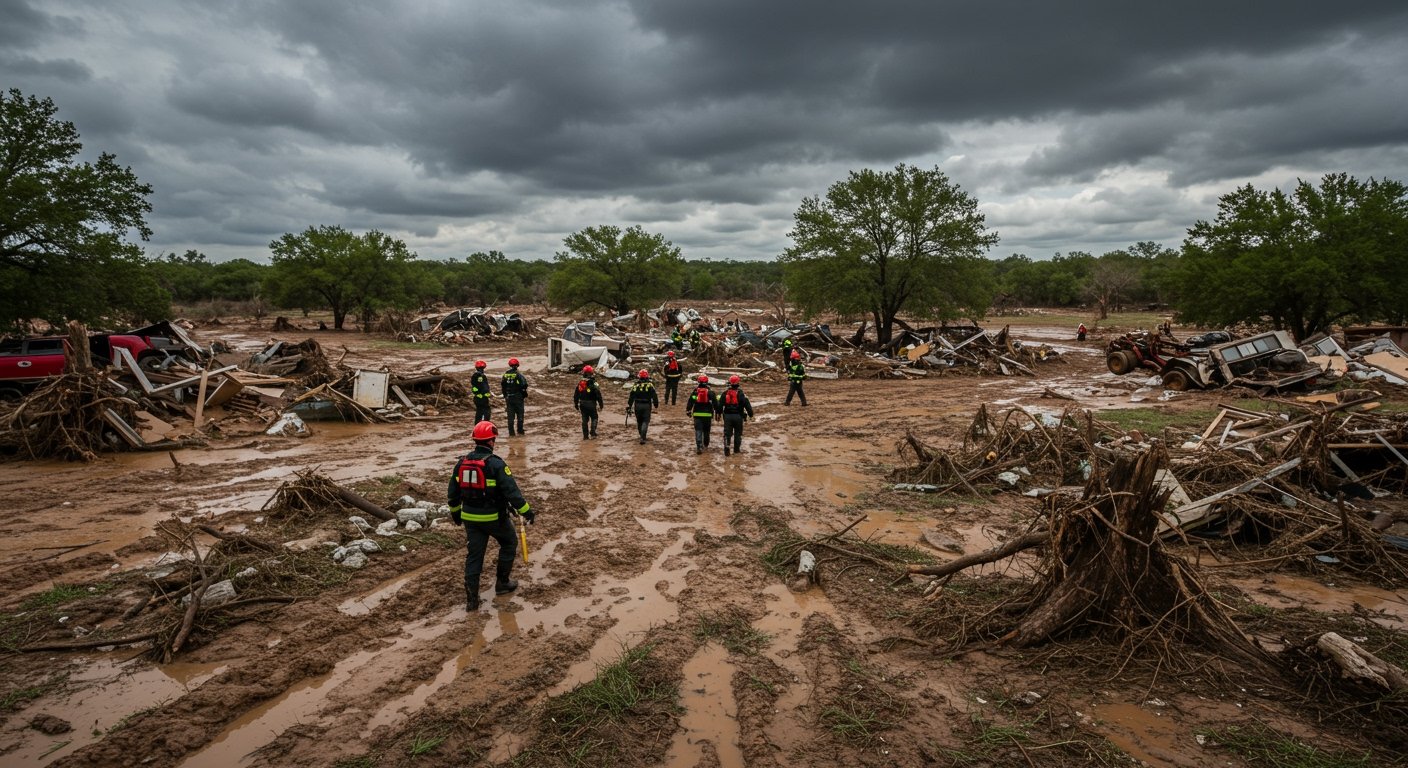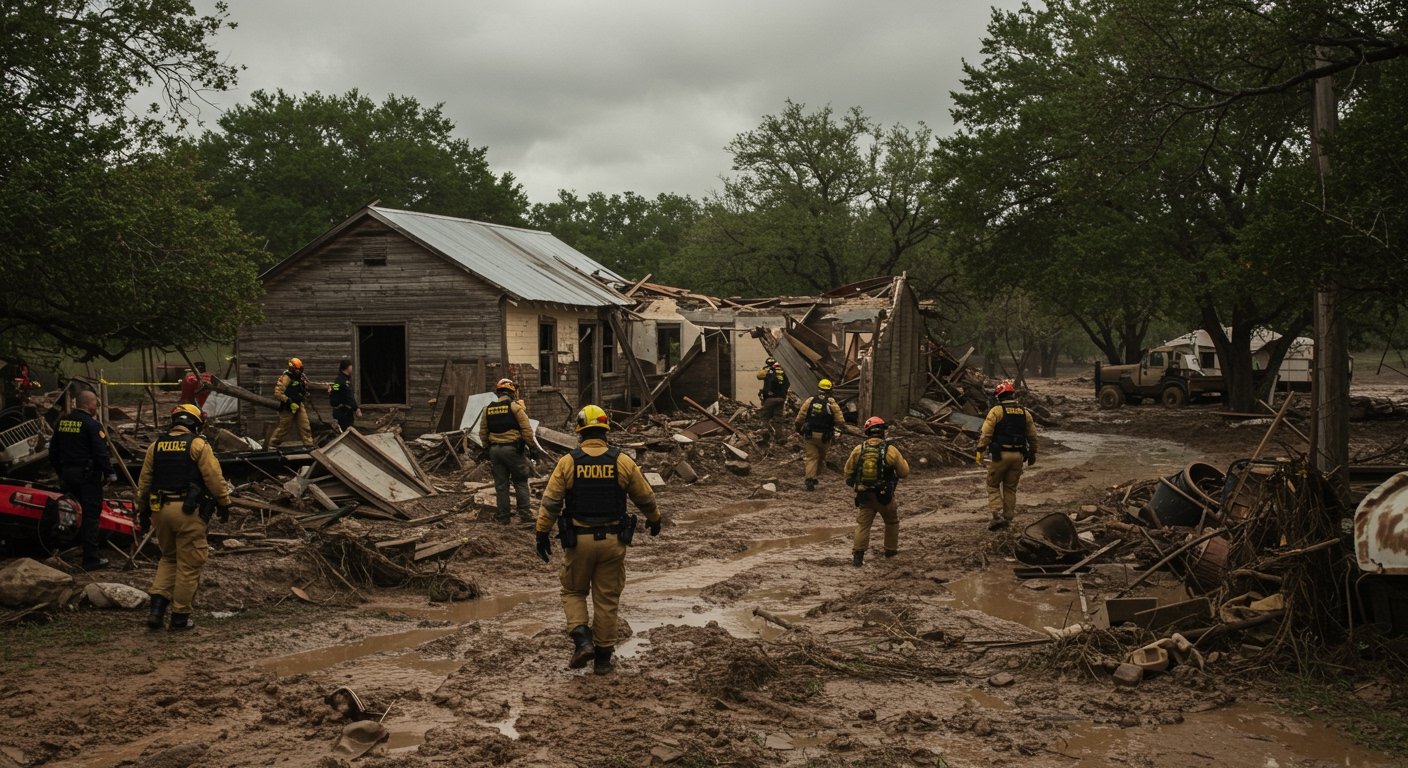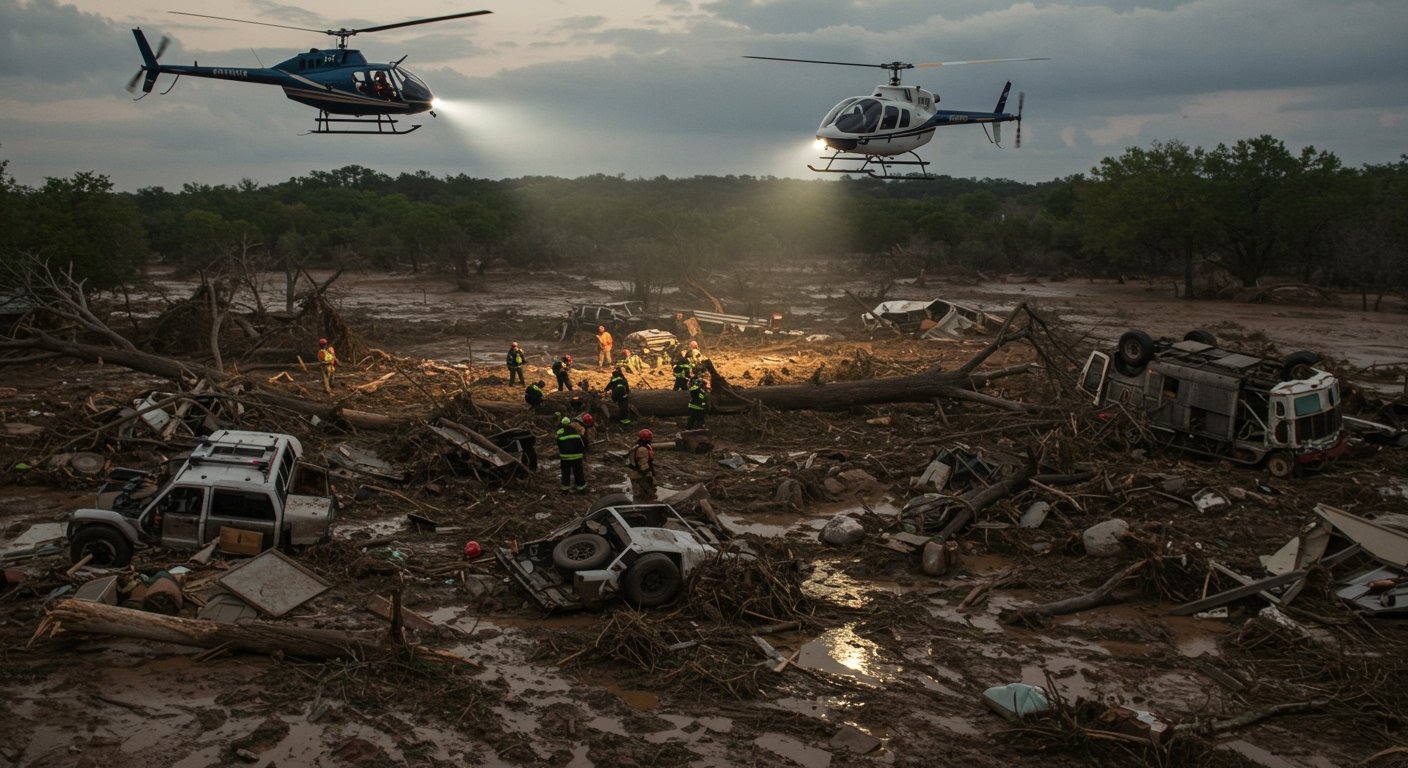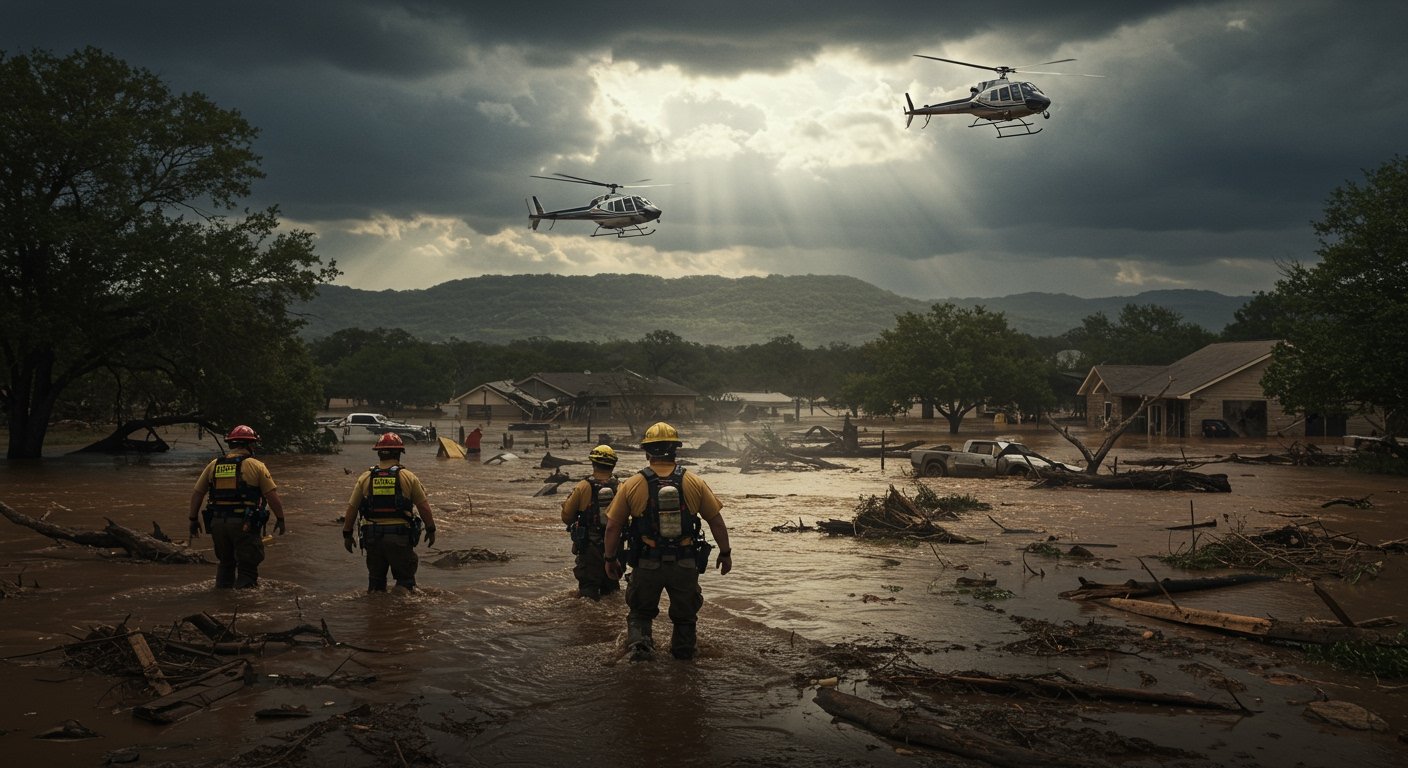CENTRAL TEXAS – Rescuers continued their grim search through the debris and swollen waterways of Central Texas on Sunday, July 6, 2025, following catastrophic flash floods that have claimed at least 79 lives. The disaster, which struck the Texas Hill Country around the Fourth of July weekend, has left communities reeling and raised urgent questions about warning systems and preparedness.
The confirmed death toll continued to mount throughout the weekend as search teams navigated treacherous conditions. Authorities reported finding more bodies, tragically increasing the count in multiple counties impacted by the unprecedented deluge.
Escalating Fatalities Across the Region
The heart of the tragedy appears centered in Kerr County, where Sheriff Larry Leitha reported finding 16 bodies since Saturday afternoon alone. This brings the total number of confirmed fatalities in Kerr County to 59, a figure that tragically includes 21 children.
The devastating impact was not confined to a single area. Beyond Kerr County, four deaths were also reported in Travis County, three in Burnet County, and one in Kendall County, underscoring the widespread nature of the flood’s fury across the region.
The Search for the Missing
A critical focus of ongoing operations remains the search for individuals still unaccounted for. Among the most poignant cases are 11 campers missing from Camp Mystic, a Christian summer camp located in Hunt, Texas. The missing group comprises 10 young girls and a camp counselor, their disappearance highlighting the vulnerability of those caught unaware by the rapidly rising waters.
Search teams, utilizing helicopters, boats, and ground personnel, are meticulously combing riverbanks, debris piles, and submerged areas in the hope of finding survivors or recovering additional victims. The uncertainty for families of the missing adds another layer of anguish to the unfolding tragedy.
The Unprecedented Deluge
The speed and intensity of the flooding were staggering. The Guadalupe River, a central waterway in the affected area, saw an almost unimaginable rise. The river gauge at Hunt, Texas, recorded a shocking 22-foot increase in just two hours during the peak of the storm. The gauge reached 29 ½ feet before the infrastructure failed, leaving officials blind to the subsequent water levels but indicating the sheer force and volume of the floodwaters.
Local officials in Kerr County initially stated they could not have foreseen such a rapid and dramatic rise in water levels, reflecting the extraordinary nature of the event that overwhelmed standard flood prediction models.
Questions Over Warnings and Rainfall
The scale of the disaster has inevitably raised questions about the adequacy and timeliness of warnings issued to residents and institutions like summer camps. The National Weather Service (NWS) issued a flood watch for the area at 1:18 p.m. on Thursday, July 3, 2025, predicting up to 7 inches of isolated rainfall. However, parts of the region received as much as 12 inches by Friday morning, far exceeding initial forecasts.
The first flash flood warning specifically for the immediate danger was issued by the NWS at 1:14 a.m. Friday, July 4, 2025. The gap between the watch, the actual rainfall amounts, and the flash flood warning has become a point of discussion as authorities and residents assess the response and potential areas for improvement in future emergency notifications.
State Response and Community Grief
In response to the widespread devastation and loss of life, Texas Governor Greg Abbott declared Sunday, July 6, 2025, as a Day of Prayer across the state. The declaration aimed to unite Texans in reflection and support for the affected communities and families grappling with unimaginable grief.
The floods have left a path of destruction, damaging homes, businesses, roads, and infrastructure across the picturesque Texas Hill Country. The long-term impact on the environment and local economies is expected to be significant.
As search efforts continue and the full scope of the tragedy becomes clearer, the focus is shifting towards recovery, supporting displaced residents, and conducting thorough reviews of the events leading up to and during the flood to understand if more could have been done to mitigate the catastrophic loss of life.






